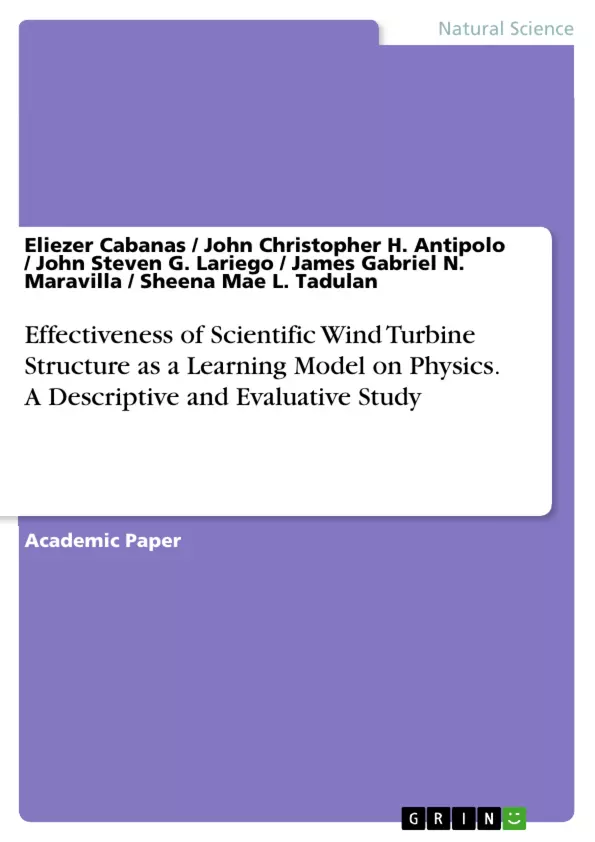The use of scientific wind turbine structure represents a model to efficiently comprehend the exploration of energy and physics. Several engineers and inventors created a structure not only taking advantage the conversion of energy but also to describe the basic principles of physics. It encourages the improvement in understanding through a visualization. This study utilized descriptive-evaluative research design. The purpose of descriptive method is to find a detailed explanation and description about the object of the research systematically. In this study, the researchers will be using the questionnaire which consists of statements regarding the effectivity of the structure as a learning model of physics. The collected data proved that the model has a very high level of effectiveness on helping to visualize the concept of our study. This implies that our model is an effective learning material and it is an efficient way to understand the law of conservation of energy. Based on the gathered and analyzed data the researchers concluded that the model is an effective learning material in understanding conversion of energy. The researchers recommended to future researchers to create emphasis in terms of discussing the function of the model as a learning material.
Table of Contents
- Introduction
- Methods and Materials
- Research Design
- Research Respondents
- Research Environment
- Research Instrument
- Product Procedure
- Statistical Treatment of Data
- Results and Discussion
Objectives and Key Themes
The primary objective of this study is to investigate the effectiveness of a scientific wind turbine structure as a learning model for physics, particularly in understanding the concept of energy conversion. The study aims to contribute to the development of innovative learning tools that can enhance student engagement and comprehension of physics concepts.
- The effectiveness of using a scientific wind turbine model for teaching energy conversion in physics.
- The impact of visual learning aids on student understanding of complex scientific concepts.
- The potential benefits of hands-on learning experiences in physics education.
- The role of innovative teaching methods in improving student performance in physics.
- The need for engaging and effective learning materials to address challenges in physics education.
Chapter Summaries
- Introduction: This chapter introduces the concept of energy conversion and explores the challenges students face in understanding physics. It highlights the importance of engaging learning models like scientific wind turbines to enhance comprehension and provide a hands-on approach to learning.
- Methods and Materials: This chapter outlines the research design employed in the study, which includes both descriptive and evaluative methods. It describes the target population, the research environment, the research instrument used (a questionnaire), and the process of constructing the wind turbine model.
- Results and Discussion: This chapter presents the findings of the study, which demonstrate the high level of effectiveness of the wind turbine model in helping students visualize the concept of energy conversion. The data analysis indicates that the model is a valuable learning tool and an efficient way to understand the law of conservation of energy.
Keywords
The study centers around the core concepts of learning materials, scientific wind turbine structure, energy conversion, visualization, and physics education. These themes are explored through a descriptive-evaluative research approach and highlight the potential benefits of engaging, hands-on learning models in improving student comprehension and engagement in physics.
- Quote paper
- Eliezer Cabanas (Author), John Christopher H. Antipolo (Author), John Steven G. Lariego (Author), James Gabriel N. Maravilla (Author), Sheena Mae L. Tadulan (Author), 2022, Effectiveness of Scientific Wind Turbine Structure as a Learning Model on Physics. A Descriptive and Evaluative Study, Munich, GRIN Verlag, https://www.grin.com/document/1417725



